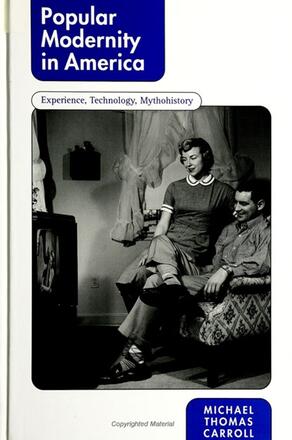
Popular Modernity in America
Experience, Technology, Mythohistory
Alternative formats available from:
Examines a wide variety of cultural and technological phenomena that have helped shape American popular culture over the last 150 years.
Description
Does technology alter our ways of being in and perceiving the world, or does it merely serve as a conduit for predetermined patterns of culture? In addressing this question, Popular Modernity in America examines a broad range of related cultural and technological phenomena—from Bing Crosby to Ice Cube, from the invention of the telegraph to the celebratory heralding of the internet in the 1990s—that have helped shape American popular culture over the past 150 years. Throughout, it avoids the binaries that label popular culture as inherently liberatory or subtly oppressive, arguing instead for the triadic relationship of experience, technology, and myth, each of which has an active role to play in how we interact with popular culture.
Michael Thomas Carroll is Associate Professor of English at New Mexico Highlands University. He is the editor of No Small World: Visions and Revisions of World Literature, and coeditor of Phenomenological Approaches to Popular Culture.
Reviews
"This is an excellent book, gracefully written and scrupulously detailed. The range and sweep of Carroll's scholarship is impressive, and he manages to link such unlikely figures as Bing Crosby and the culture of contemporary Rap music in ways that surprise and delight the reader's imagination. The theoretical arguments throughout the book and the range of topics are remarkable and refreshing. I consider this to be one of the most ably interdisciplinary texts I've ever encountered. " — Wheeler Winston Dixon, author of The Second Century of Cinema: The Past and Future of the Moving Image
"The splendid synthesis and approach make this a very rich text. The conceptualization, scope, depth, and analysis are outstanding. Rather than an exhaustive historical overview of entertainment and modernity, the author's paradigm is a manageable and interesting method. The technology-myth-experience triad is useful, insightful, and interesting. And there is a strong sense of historical framing and evolution. Hugely significant!" — George Plasketes, author of Images of Elvis Presley in American Culture, 1977–1997: The Mystery Terrain